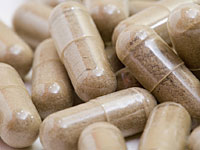
TUESDAY, September 27, 2011 (Health.com) — The millions of middle-aged men who take saw-palmetto supplements to cope with the symptoms of an enlarged prostate might as well be popping sugar pills.
That’s the conclusion of a new clinical trial, published this week in the Journal of the American Medical Association, that found that the herbal extract is no better than placebo at reducing bathroom trips or otherwise improving the urinary-tract symptoms associated with prostate enlargement.
“There’s probably no real benefit,” says Simon J. Hall, MD, the chairman of the urology department at the Mount Sinai School of Medicine, in New York City, who wasn’t involved in the new research. “Ultimately, the way I would look at it is: Is it worth spending $20 or $30 a month to take something that is probably not going to do anything?”
Nearly all men experience some prostate-gland growth as they age. Most have no obvious symptoms, but because the prostate surrounds the urethra, this otherwise harmless enlargement (known as benign prostatic hyperplasia) sometimes causes symptoms such as dribbling after urination, a weak urine stream, and the frequent need to wake up at night to urinate.
Saw palmetto has long been marketed as a remedy for these symptoms, but in clinical trials it has consistently failed to outperform placebo. A 2009 review of 30 randomized controlled trials—including a rigorous 2006 study published in the New England Journal of Medicine—concluded that the herbal extract was no more effective than placebo.
In the new study, the largest of its kind to date, the researchers randomly assigned 369 U.S. and Canadian men with prostate-related symptoms to take saw-palmetto capsules or an identical placebo. After 18 months, the men taking saw palmetto were doing no better than those on placebo, even though the dosage of saw palmetto was increased twice during the study, to 960 milligrams—three times the typical daily dose.
Neither saw palmetto nor placebo made a substantial dent in the men’s symptoms. At the beginning of the study, the average severity of the men’s symptoms measured about 14.5 on a 35-point scale commonly used by urologists; by the end, the average severity had declined by three points in the placebo group and just two points in the saw palmetto group.
Lead author Michael J. Barry, MD, a primary care physician at Massachusetts General Hospital, in Boston, points out that between 40% and 45% of the men in both groups saw a “perceptible improvement” in their symptoms, however. That improvement can be chalked up only to the placebo effect, not to any active ingredients in the saw-palmetto extract. But that doesn’t necessarily mean that men shouldn’t take saw palmetto, Dr. Barry says.
“We can’t show, on the one hand, that it’s better than placebo, but some men do have an improvement in their symptoms, and there seem to be virtually no side effects,” he says. “I wouldn’t object, given the no side effects, if men wanted to try it.”
Next page: $19 million in sales in 2010





